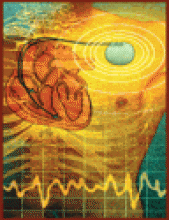- © 2004 Canadian Medical Association or its licensors
C. diff compensation: The Quebec government should compensate victims of Clostridium difficile and other nosocomial infections, a new patient advocacy group is demanding. The Association to Defend Victims of Nosocomial Infections wants Quebec to follow France's lead in establishing a no-fault compensation system. As of 2002, patients in France who suffer more than 25% disability from a hospital-acquired illness can apply to the National Office for Compensation of Medical Accidents. The Quebec patients' group also urged Quebec Health Minister Philippe Couillard to require hospitals to publish their infection rates monthly. “It's clear that the level of precaution [in hospitals] must be upgraded,” says Montreal lawyer Jean-Pierre Ménard, who is preparing lawsuits for some of the victims of the recent C. difficile outbreak in Montréal and Sherbrooke hospitals. In the last 18 months, 100 patients in Sherbrooke and at least 79 in Montréal-area hospitals died after contracting C. difficile. — Laura Eggertson, CMAJ.

Figure. Photo by: Comstock

Figure. Photo by: DSRF
Brain function: Targeted to assess and evaluate Down syndrome and other brain-related disabilities, a new $3.5-million magnetoencephalograph (MEG) neuroscience unit recently opened in Burnaby, BC. The MEG, located at the Down Syndrome Research Foundation (DSRF), could also be used in pre-surgical mapping, and to review diagnoses and treatments for mental illnesses, brain-related injuries and diseases, including epilepsy, and Alzheimer's and Parkinson's disease. The MEG technology looks at the brain almost in real time with millisecond accuracy. “It can do everything from assessing the cognitive effects of brain injuries to serving as a tool for research in such areas as autism and dyslexia,” says psychologist Dan Weeks. The MEG is Canada's third; the other 2 are in Toronto. MEG measures the tiny magnetic fields emitted by neurons and is “completely noninvasive,” says Weeks, chair of the psychology department at Simon Fraser University, which partly funds the unit. — Christopher Guly, Ottawa
Vein to vein standards: The Canadian Standards Association (CSA) has issued new national standards for the safe handling of blood, from collection to transfusion. The standards, which fulfill a recommendation from the Krever inquiry into tainted blood, draw on best practices from organizations such as Canadian Blood Services (CBS). They also present guidelines for other players. For example, the CSA recommends that all hospitals test the blood patients collect and save for themselves. CBS already meets or exceeds most requirements, says Dr. Barbara Hannach, CBS medical director. CBS believes the guidelines will increase Canadians' confidence in the safety of the blood supply. “Previously, blood operators and hospitals needed to look to a variety of regulations and industry standards from Canada and abroad for guidance,” CEO Dr. Graham Sher stated. “Today, thanks to this standard, we have the first comprehensive national reference for all organizations involved in blood and blood components.” — Laura Eggertson, CMAJ
Toxic metals: A study reveals that levels of toxic metals are higher in a group of employees from the New Waterford Consolidated Hospital in Cape Breton than in a similar group of employees from the nearby Strait Richmond Hospital. The New Waterford Hospital has been at the centre of a controversy for more than year, since staff began reporting illnesses after renovations at the health care facility. Dr. Ben Boucher, a primary care physician who is treating many of the ill hospital workers, had a urine analysis done on 11 workers from both hospitals. “Of 12 toxic metals analyzed,” he says, “10 were present in either double or more than double the [levels] in the New Waterford population.” Boucher shared his findings with health professionals and administrators at the New Waterford Hospital and hopes action will be taken. However, 2 earlier studies failed to link the renovations to the illnesses experienced by hospital staff. — Donalee Moulton, Halifax
Suicide toll: Worldwide, nearly a million people commit suicide annually, more than deaths from homicide (500 000) and war (230 000) combined. The WHO estimates that suicide fatalities could rise to 1.5 million by 2020. The biggest problem appears to be in the Baltic and former Soviet states. In Lithuania, about 42 people per 100 000 committed suicide in 2000. In Estonia the figure was 40, and in Russia 38. The region with the lowest rate is Latin America. “It's important to realize that suicide is preventable,” said Lars Mehlum, president of the International Association for Suicide Prevention, “and that having access to the means of suicide is both an important risk factor and determinant of suicide.” The most common methods are pesticides, firearms and medications, such as painkillers. WHO offers a series of guidelines on suicide prevention (www.who.int). — Compiled by Barbara Sibbald, CMAJ











